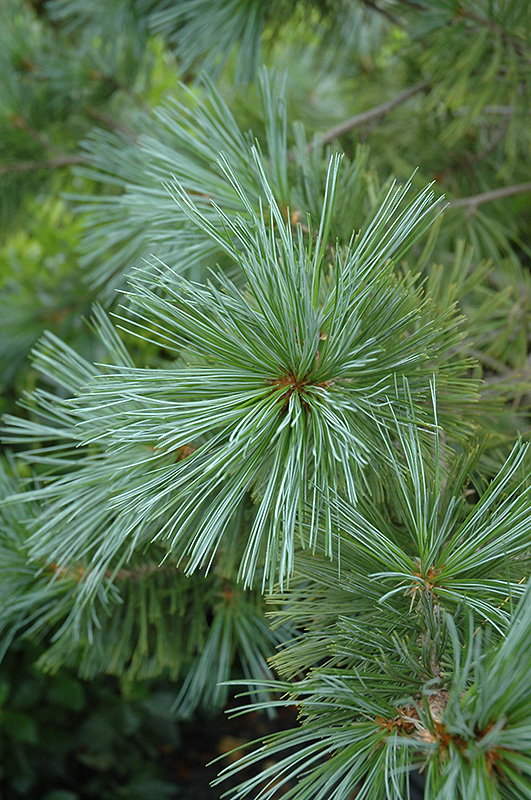>> Home
Vanderwolf's Pyramid Pine
Pinus flexilis 'Vanderwolf's Pyramid'
Height: 35 feet
Spread: 18 feet
Sunlight:
![]()
![]()
Hardiness Zone: 4
Description:
A newer popular evergreen tree with a dense, compact pyramidal form; features interestingly twisted blue-green needles on very flexible branches (they can even be tied in a knot!), quite durable, an excellent choice for smaller landscapes
Ornamental Features
Vanderwolf's Pyramid Pine is primarily valued in the landscape for its distinctively pyramidal habit of growth. It has attractive bluish-green evergreen foliage. The needles are highly ornamental and remain bluish-green throughout the winter. The shaggy gray bark adds an interesting dimension to the landscape.
Landscape Attributes
Vanderwolf's Pyramid Pine is a dense evergreen tree with a strong central leader and a distinctive and refined pyramidal form. Its relatively fine texture sets it apart from other landscape plants with less refined foliage.
This is a relatively low maintenance tree. When pruning is necessary, it is recommended to only trim back the new growth of the current season, other than to remove any dieback. It is a good choice for attracting birds to your yard. It has no significant negative characteristics.
Vanderwolf's Pyramid Pine is recommended for the following landscape applications;
- Accent
- Shade
Planting & Growing
Vanderwolf's Pyramid Pine will grow to be about 35 feet tall at maturity, with a spread of 18 feet. It has a low canopy with a typical clearance of 5 feet from the ground, and should not be planted underneath power lines. It grows at a slow rate, and under ideal conditions can be expected to live to a ripe old age of 100 years or more; think of this as a heritage tree for future generations!
This tree does best in full sun to partial shade. It prefers dry to average moisture levels with very well-drained soil, and will often die in standing water. It is considered to be drought-tolerant, and thus makes an ideal choice for xeriscaping or the moisture-conserving landscape. It is not particular as to soil type or pH. It is somewhat tolerant of urban pollution. This is a selection of a native North American species.

